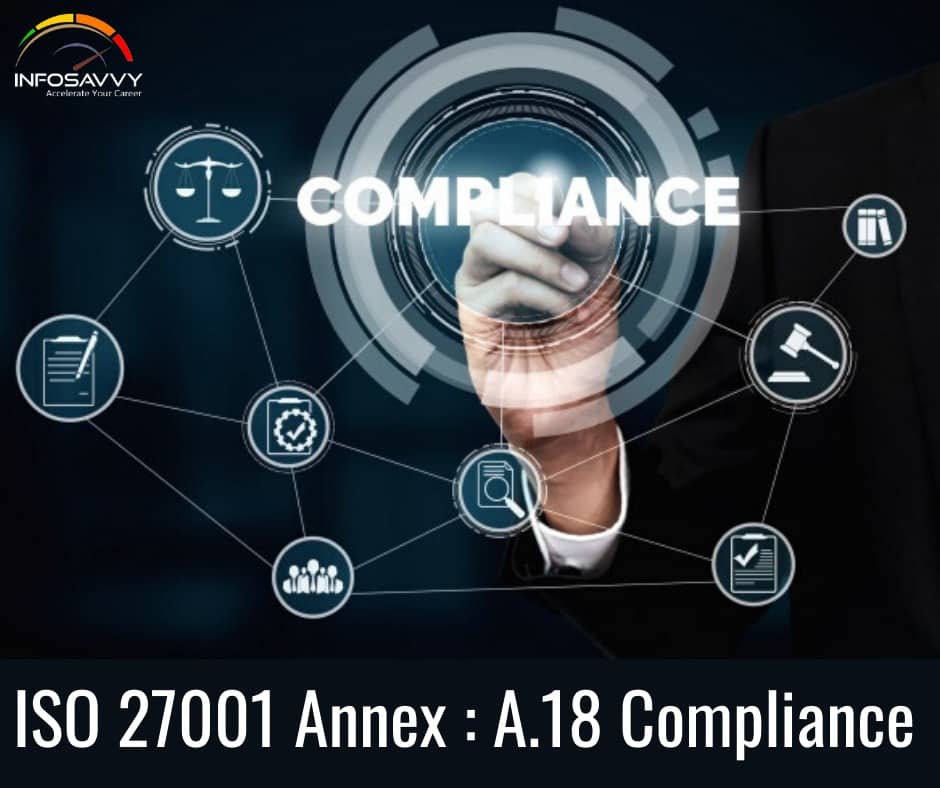
In this article explain ISO 27001 Annex : A.18.1.3 Protection of Records, A.18.1.4 Privacy and Protection of Personally Identifiable Information and A.18.1.5 Regulation of Cryptographic Controls this contols.
A.18.1.3 Protection of Records
Control- ISO 27001 Annex : A.18.1.3 Protection of Records Records shall, in accordance with the provisions to legislative, regulatory, contractual, and business requirements, to protect from loss, destruction, falsification, and unauthorized access and unauthorized release.
Implementation Guidance- The related classification based on the organization’s classification scheme is to be taken into account when determining whether to secure relevant organizational documents. Categorized records in the following types of records, such as accounting records, database records, transaction records, audit logs, and operating procedures, should include details on retention periods and the type of media permitted for storage, such as paper, microfiche, magnetic, optical. Any associated encryption keys and programs related to encrypted or digital signatures (see Clause 10) must also be stored so that records are decrypted for a period of time during which records are kept.
The possibility of media deterioration used for record storage should be taken into consideration. In accordance with the manufacturer ‘s recommendations, storage and handling procedures should be implemented.
When electronic storage media are selected, protocols should be developed in order to protect against loss due to potential technical changes to ensure access for data (either media or format readability) over the retention period.
Related Product : ISO 27001 Lead Auditor Training And Certification ISMS
Data storage systems should be assigned so that the data required can be recovered, depending on the requirements to be fulfilled, in a time and format acceptable.
The storage and handling system should, if appropriate, ensure that records and their retention periods are known as specified in national or regional laws. After that period, if records are not required by the organization, this system should allow appropriate destruction.
The following steps should be taken by an organization in order to achieve these record safeguarding goals:
- Guidelines should be provided with regard to documents and information processing, storage, handling and disposal;
- A schedule for retention of records and the period for which they should be retained should be defined.
- An inventory of main information sources should be maintained.
Other Information- Those documents need to be maintained safely to satisfy legislative, regulatory, or contractual requirements and to maintain key business operations. Examples include documents that might be necessary to show the legislative or regulatory operation of an entity to protect it from the potential civil or criminal acts of the public and to clarify to shareholders, external parties, and auditors the financial position of an organization. The period of time and data content for the retention of information may be determined by national law or regulation. More information on organizational record management is available in ISO 15489.
Also Read : ISO 27001 Annex : A.18 Compliance
A.18.1.4 Privacy and Protection of Personally Identifiable Information
Control- Privacy and protection of personal data should be guaranteed, as required, in applicable laws and regulations.
Implementation Guidance- A data policy of the organization should be developed and implemented to protect the privacy and personal information identifiable. This policy should be communicated to everyone involved in personal information processing.
Compliance with this policy and all the relevant legislation and regulations regarding privacy and personal information protection requires a proper management structure and control. This is often best achieved by appointing a responsible person like a security officer, who should give management, users and service providers guidance on their responsibilities and specific procedures. Responsibility should be taken in compliance with applicable laws and regulations for managing personally identifiable information and awareness of the information security principles. Suitable technical and organizational measures should be implemented to protect personal information.
Read More : https://info-savvy.com/iso-27001-annex-a-18-1-3-a-18-1-4-a-18-1-5/
This Blog Article is posted by
Infosavvy, 2nd Floor, Sai Niketan, Chandavalkar Road Opp. Gora Gandhi Hotel, Above Jumbo King, beside Speakwell Institute, Borivali West, Mumbai, Maharashtra 400092
Contact us – www.info-savvy.com


